In the first part of this two-part series, the growing problem of musculoskeletal disorders (MSDs) and repetitive strain injuries in dental practitioners was introduced, and the signs, symptoms, and risk factors were discussed as they relate to dentistry. Dentists and hygienists in particular are at risk for developing MSDs because of the prevalence of awkward postures in dental procedures, highly forceful and repetitive work, prolonged static and unsupported sitting, extended workdays, and the impact of working with thin instruments in overextended positions throughout the day. The important issue of posture was explored, looking at the impact of working in an improperly set up workstation and the resulting harmful postures that must be undertaken to perform dental work in such environments. Ten recommendations were given for improving the workstation and subsequent postures, which could be implemented in dental offices to reduce the physical stresses that could lead to musculoskeletal disorders.
In this article, we continue to look at the ways that dentists and hygienists perform their profession, starting with the work practices that predispose them to overuse the muscles, tendons, and nerves of their upper extremities. The risk factors involved with working with thin, sharp instruments away from the body are examined, and suggestions to reduce the amount of physical stress from instrument use are offered. The practitioner must also take personal responsibility for his own health by performing exercises and stretches both at work and at home, practicing stress management techniques, avoiding excessive use of his hands at home, and taking the necessary precautions to prevent the development of MSDs. Dentists can perform beneficial exercises/stretches every day (Figures 1 through 10) that will hopefully be incorporated into healthy lifestyle changes that support their ability to practice.
WORK PRACTICES
Dentists and hygienists are required to perform physically demanding work with the muscles of their arms and hands almost continuously throughout the day, while trying to provide the highest quality of care for each patient. They are often overbooked with heavy calculus patients scheduled back-to-back, requiring them to use excessive force with their hands without rest breaks in between. The procedures of probing, scaling, root planing, cleaning, polishing, and flossing the teeth are hand intensive and repetitive in nature, and when these are done in an improperly set up workstation for that individual practitioner the chances of developing repetitive injuries are multiplied. Dentists must look at the way they work, learn to pace themselves, and rotate between a variety of tasks and positions to give their muscles a break and allow them to work a full day without causing cumulative damage to their bodies. Changes in work practices are the easiest and least expensive alterations that can be made by the practitioner to reduce the stress of dental work.
Some of the risk factors that are involved in dental work practices include:
•Inadequate time per patient
•Overscheduling of patients
•Repetitive tasks performed without breaks
•Scheduling heavy calculus patients back-to-back
•Polishing each patient’s teeth
•Unchanging operator position
•Unchanging delivery system
•High pressure for quality care.
IMPROVING YOUR WORK PRACTICES
The following tips for improving your work practices can be incorporated into your daily routine to minimize or alleviate stresses placed on the body.
Schedule Enough Time for Each Patient
Using the hygiene patient as an example, the recommended amount of time that should be spent with each patient is 50 to 60 minutes for an adult and 35 minutes for a child. This is the ideal that should be strived for to allow the practitioner to have enough time to perform the procedures, write her notes, and prepare for the next patient. If there is time left over, the practitioner should perform exercises and stretches to increase circulation, decrease muscle tension, and prepare the body for the next patient.
Alternate Scheduling of Light/Heavy Calculus Patients; Use Selective Polishing
For hygiene patients, make a notation of the amount of calculus that a patient has when you see them, and ask the office staff at the front desk to schedule given patients at scheduled times of the day. Make sure that no more than half of your patients on a certain day are heavy calculus patients to spread the stress on your hands over many days.
Use selective polishing. If the patient is holding his part of the bargain and brushing and flossing each day, you may not need to polish his teeth, or you can spend less time on this task and put less stress on your hands. You could even offer a slightly discounted rate to these patients to reward their good oral hygiene.
Rotate Between Tasks
Give yourself time throughout the day to work on administrative tasks, patient charting, and other activities so your hands will have a break from direct patient care. By rotating tasks, you change the stresses that you are putting on your body, which gives various body tissues a chance to recover before being asked to perform the same motion again.
Schedule Rest Breaks Between Patients
To prevent repetitive injuries, it is better to pace yourself and schedule fewer patients per day, with rest breaks in between to allow yourself time to heal. During your break, you should perform nonstressful exercises, take walks, stretch, perform stress relaxation techniques, or just rest your hands.
Switch Between Positions Throughout the Day
Sedentary work, like that performed in dentistry, concentrates work stress onto certain muscles and builds tension in our bodies. By alternating between positions, you shift the stress onto different muscles, increase your circulation, and lessen the amount of fatigue from your work.
Vary Operator Position/Delivery System With Each Patient
If you always work on the same side of your patient with your delivery system in the same location, you will focus the stress of your work on the same muscles, which will eventually cause these areas to break down. By switching sides of the patient and altering the position of your delivery system, you will use your muscles in different ways, which will spread the stress over other parts of your body.
Gradually Increase Work Tolerance
If you have control over your work hours, try to gradually increase the amount of time that you spend doing certain tasks, so that your body has time to adjust to the new stresses that you are putting upon it. Communicate your needs to your colleagues, and try to work out a schedule that works best for everyone.
The instruments that dentists and hygienists use pose a special threat to the muscles and tendons of their arms and hands. They are required to forcefully grip thin instruments and make constant, precise movements with the small muscles of their hands and forearms throughout various procedures. Some of the most hand-intensive procedures that must be performed by dental practitioners are (1) probing, which requires high forces to be exerted by the hands; (2) scaling, which involves short strokes and the application of strong pressure; and (3) root planing, which requires longer strokes and more extensive ranges of motion in the wrists. Instrument usage involves all of the primary risk factors: repetition of movements; forceful exertions needed to manipulate the thin instruments; awkward postures of the wrists and fingers; contact stress on the fingers from the instruments; and harmful vibration effects from using ultrasonic scalers and drills.
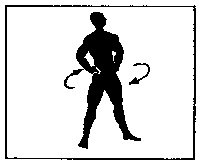 |
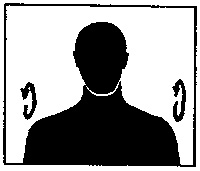 |
| Figure 1. Hip Circles. With legs apart and hands on hips, make circles with hips in clockwise and then counterclockwise motion. Begin with 10 repetitions and increase to 25. | Figure 2. Shoulder Circles. Move shoulders toward ears and then back trying to touch shoulder blades together. Repeat 15 to 20 times and then reverse direction. |
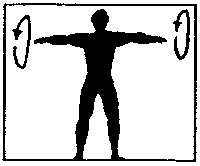 |
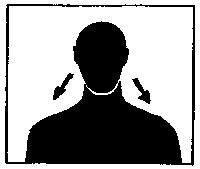 |
| Figure 3. Arm Circles. With arms at sides, make circles with arms out in front, over head, to side, and back down again. Make larger circles until arms move through their entire range of motion. Perform 15 to 20 repetitions and then switch directions. | Figure 4. Neck Exercise. With shoulders relaxed and arms at sides, bend head to one side, trying to touch ear to shoulder. Bring head back to center and repeat on other side. Progress from five repetitions to about 15 to 20. |
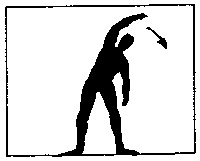 |
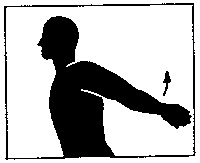 |
| Figure 5. Side Stretch. With legs shoulder width apart, lift arm over head while slowly bending torso sideways. Breathe and hold position for 15 to 20 seconds. Repeat on other side. | Figure 6. Shoulder Stretch. Clasp hand behind back with elbows straight and lift arms back behind you. Hold position for 15 to 20 seconds. |
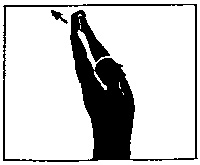 |
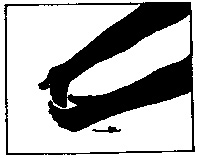 |
| Figure 7. Overhead Stretch. Clasp hands together with elbows straight and lift arms over head. Breathe while stretching arms backward for 15 to 20 seconds. | Figure 8. Wrist Stretch. Extend arm straight out with palm facing up. With other hand grasp thumb and fingers of extended arm and slowly pull fingers backwards until you can feel a stretch over front of forearm. Hold position for 20 to 30 seconds and repeat on opposite side. |
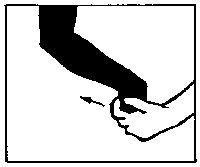 |
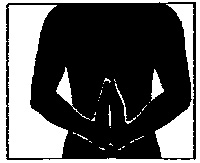 |
| Figure 9. Forearm stretch. Extend arm straight out with palm facing down. With other hand push down on the back of hand until you can feel a stretch over the back of forearm. Hold position for 20 to 30 seconds and repeat on opposite side. | Figure 10. Prayer Stretch. Place palms of hands together in prayer-like position, fingers pointing up. Press wrists downward until you feel a stretch over front of wrists and into forearms. Hold for 20 to 30 seconds. |
INSTRUMENT USAGE
Many problems have been noted with dental instruments, including the small diameter of the handles (usually between 3/16” to 4/16” in diameter), which requires a tighter grip to hold the instrument. Many instruments were designed with function in mind, without consideration of ergonomic factors or the possible effect on the body, and are unbalanced and require increased muscular force to manipulate. When dental instruments are not regularly maintained and kept sharp, more pressure may need to be applied to remove plaque and clean teeth. Additional problems are created by tight gloves and wristwatches, which decrease circulation and make it more difficult to manipulate dental tools. Instruments provide the practitioner/patient interface, but their use involves a number of harmful positions that greatly increase the practitioner’s hand stressors and may result in the development of MSDs.
Some of these harmful positions include:
•Extreme wrist flexion/extension, ulnar deviation, forearm rotation
•Repetitive grasping with thumb and fingers
•Excessive finger movements
•Firm grasp/excessive force needed to hold instruments
•Thumb hyperextension
•Pressure from instrument edges on fingers
•Vibration damage from vibrating instruments
•Tight gloves that constrict wrist/fingers.
Improving Instrument Usage
Adjustments in how you use various instruments can go far in affecting stresses on the hands and body. The following tips can help.
Use of Proper Instrumentation Techniques
Select the proper instruments for the task, and make sure to use good technique with the least amount of force necessary to perform the procedure. It is especially important to remember technique and ergonomic positioning when you are tired at the end of the day.
Use Larger Diameter, Balanced Instruments
Purchase high-quality instruments with large diameter handles that are easy to grip and balanced for less forceful manipulations. The cost of good instruments pays for itself when you factor this amount out over the number of years the instrument will be used.
Instrument Handles Should Be Rubber Coated With Waffle Iron Serrations
Because you work in a cold, wet environment, instrument handles should be rubber coated to retain heat and serrated to increase friction/decrease the force needed to grip the instrument.
Keep Instruments Sharp
Well-maintained, sharp instruments do a better job of cleaning the teeth with less physical work required by the practitioner, so instruments should be checked and sharpened on a monthly basis.
Use Ultrasonic Scalers and Slim Lines
Consider using ultrasonic equipment that reduces the amount of work that your hands must do to perform dental procedures. Make sure to dampen the vibration in these instruments to reduce the force needed to grip them and to prevent potentially harmful vibration from being transferred to the hand.
Alternate Grasp: Tripod and Three Chuck Grasps
The standard grip that dentists use with their instruments, the same as gripping a pen to write, puts stress on the muscles of the thumb, pointer finger, and wrist. Instead, try placing the shaft of the instrument between your pointer and middle fingers and use your thumb as a guide, which will take the stress away from gripping the instrument and shift it to other muscles.
Vary Between Intraoral and Extraoral Fulcrums
As a variation on holding your arms above the patient throughout the procedure, lightly rest
your fingers on the patient’s teeth, using them as a fulcrum to move the instrument (intraoral), or rest your elbow on the side of the patient’s chair to take some weight off your shoulders and use your elbow as a fulcrum from which to work (extraoral).
Wear Properly Fitting Gloves
Watch out for gloves that are too tight or a watch that cuts off your circulation at your wrist. Order gloves in different sizes, so that all of the dentists who work in your office will have gloves that allow them to work with the least amount of restriction in their hands.
TAKE CARE OF YOUR OVERALL HEALTH
As health professionals, we often focus our efforts on providing care for our patients, without taking proper care of ourselves. When combined with work that causes us to repeatedly strain our muscles, tendons, and other body tissues, this physical stress can promote the development of MSDs through muscle tension, restricted movement, and pinched nerves. That is why it is very important to begin to take care of yourself, if you have not started already, and follow a regular fitness regimen and health routine that can be incorporated into your work week.
IMPROVING YOUR OVERALL HEALTH
Make regular physical and mental exercise part of your daily routine.
Keep Yourself in Shape
The best thing that you can do is to devote part of your day to keeping yourself in shape to be able to handle the stresses, mental and physical, that you accrue through work, and still keep a healthy attitude toward yourself and the people that you serve. This involves exercise, flexibility, proper nutrition, and staying active.
Perform Exercises/Stretches at Work
Take regular breaks throughout the day and stretch your back, shoulders, neck, arms, and fingers (Figures 1 through 10).
Be Aware of Stress Levels
Be mindful of your stress levels, and practice breathing, meditation, and stress reduction techniques to release any tension and keep you focused on what is important. Consider going to your local bookstore and selecting a book on the subject that would fit your temperament and that you would be willing to incorporate into your daily routine.
Avoid Hand-intensive Hobbies/Chores at Home
When you’re not working, you should try to avoid hand-intensive hobbies and obsessing over chores at home, because these add to the stress you are already putting on your body during the week. Do something else instead.
Get Enough Rest and Relaxation Time
Make sure you spend enough time with your friends and family, as well as doing things that are not work-related in your spare time, to keep a balance between work and play. Try to avoid stressful activities and make sure to get enough sleep to recover from your weekly stressors.
Be Aware of Pain Signals From Your Body
With the knowledge gained from this two-part series on musculoskeletal disorders, you can be more aware of the pain signals that you are receiving from your body and take the necessary steps to prevent these discomforts from turning into repetitive injuries.
CONCLUSION
If you apply the principles and suggestions that have been recommended, you will be able to reduce the stresses that you put on your hands and arms and greatly lessen the chances that you will develop a MSD or repetitive strain injury. By making small changes in your work practices, instrument usage, posture, workstation setup, and health practices, you can greatly affect your ability to provide quality care over a long, healthy, and successful career in dentistry.
Mr. Graham is an occupational therapist, hand therapist, and ergonomist who specializes in reducing the incidence and severity of repetitive strain injuries in dental offices in the San Francisco Bay Area. His company, Employee Ergonomic Services, provides injury prevention seminars, workstation evaluations, and ergonomic training for dentists to improve posture and efficiency and reduce costly injuries that threaten the livelihood of the dental practitioner. To earn continuing education credits while attending an on-site seminar, please contact Mr. Graham at (415) 821-3264 or colin@employeeergonomics.com. The seminar involves a PowerPoint or overhead presentation, problem-solving sessions, ergonomic workstation evaluations, demonstrations, and recommendations specific to the dental practitioners and hygienists, and it can be offered nationwide.

